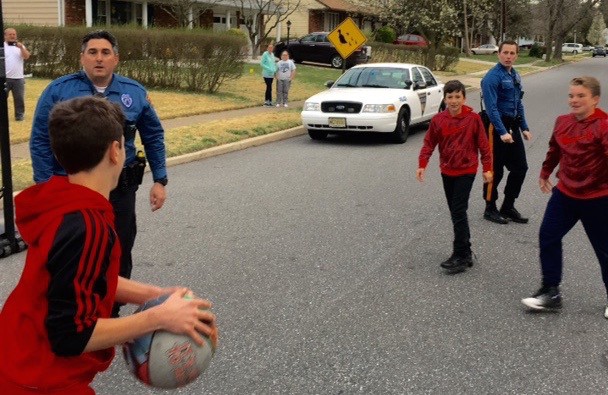
Police Chief Patrick Gurcsik implements new community caretaking strategy to encourage police, community involvement

Alongside law enforcement, community members should expect to see police officers out of their cars and interacting with residents as a result of Chief of Police Patrick Gurcsik’s newly implemented outreach philosophy called community caretaking.
Seeking to change the culture of policing, Gurcsik hopes community caretaking will build relationships through non-enforcement interaction and, in turn, open lines of communication and trust between residents and the department.
“One of the greatest challenges facing law enforcement in the 21st century is earning the trust and respect of the community,” Gurcsik said. “(Community caretaking) is going to be an entire department-wide philosophy emphasizing service, partnership and prevention with the goal of gaining greater community involvement.”
According to Gurcsik, the idea came from looking at different types of policing used throughout the country and finding a large emphasis on community engagement.
“We want to earn the trust of our community,” Gurcsik said. “We will always provide enforcement, but I’m putting greater emphasis on activities requiring officers to get out of their cars, engage the community and get involved.”
A major influence on the principles of community caretaking came from a 2015 report created by experts and former President Obama’s task force. The report called for law enforcement agencies to be guardians and less stat-driven enforcers, to embrace communities, build community trust and legitimacy from positive police interaction, provide fair and impartial policing, and to utilize technology, Gurcsik said.
The philosophy emphasizes service, partnerships, crime prevention and proactive services. Officers’ monthly evaluations will now factor in their daily community involvement along with their enforcement statistics.
“Officers are evaluated and held accountable monthly for productivity, and oftentimes that’s stat-driven, meaning officers, or their performance, are evaluated based on their statistics,” Gurcsik said. “This new form of policing is going to also include community contacts where an officer, at the end of his or her shift, will fill out daily, and if they made some community contact, they’ll note it and get credit for that.”
Gurcsik said he is looking to invite residents into the police department with open houses, is scheduling a citizen’s police academy and junior police academy, plans to hold additional Coffee with a Cop events and K-9 demonstrations and has asked officers to perform school walk-throughs. Officers are also encouraged to get out of their patrol cars and engage with community members during their shifts.
“Service is the primary orientation of community caretaking, but we’ll always be out there providing enforcement also,” Gurcsik said. “I told our officers we can do both; we can do enforcement well, but also community caretaking.”
Gurcsik said his vision for the new culture of policing would have a more diverse police force, hiring officers who are community-oriented and minded. He also aims to “develop programs addressing community perceptions of crime with input from community members to grow confidence and understanding in the department.”
“They should know that police are here to help them, and they are approachable and friends,” Gurcsik said.
Some upcoming community events the police department will be involved with include the Fourth of July parade with a K-9 float, Super Saturday on May 13 providing a demonstration, department t-shirts and collectible trading cards, and National Night Out on Aug. 1, a crime and drug prevention event sponsored by the National Association of Town Watch.


